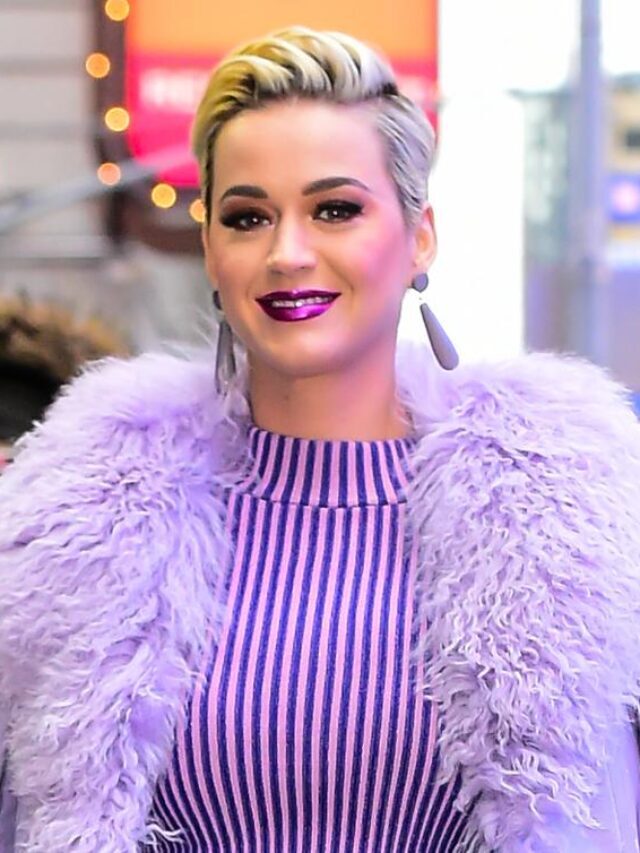A thorough examination of the painstakingly planned robbery of a Banco Rio branch in Buenos Aires is given in the Netflix-produced Argentinian documentary film “Bank Robbers: The Last Great Heist.” The film sheds light on the almost absurdly large idea and scheme, which was no less than heist missions in video games. The film stars the major perpetrators of the incident, who themselves narrate their account of the bank robbery. ‘Bank Robbers: The Last Great Heist’ uses small sets and theatrical reenactments with dummies to depict the events that occurred on the day of the heist, in addition to its exciting material, and thus furthers the entertainment.
What Is The Documentary Film’ Bank Robbers: The Last Great Heist’ About?
On January 13, 2006, at approximately 12:38 pm, Buenos Aires and the rest of Argentina witnessed a dramatic bank robbery in broad daylight that ultimately turned out to be a sophisticated theft that duped police and authorities. The building included 23 hostages who were at the robbers’ mercy, so the Buenos Aires police’s special operations unit, known as the Falcons, was swift to react to the crisis. However, when the police finally burst into the bank building, they were unable to locate any of the criminals, as if they had all gone into thin air. A skilled negotiator was also brought in to deal with the demands of the robbers. Director Matias Gueilburt manages to get hold of the four main criminals involved in this crime sixteen years after it occurred, and they then tell their story of the dream heist. This incident soon gained recognition as one of the largest bank heists ever carried out.
How Was The Heist Planned And The Crew Assembled?
Everything started with the concepts of Fernando Araujo, who was in the prime of his life around 2003 after discovering his calling as an artist. The arts he was interested in at the time—plastic arts, martial arts, and cannabis arts—are described by Araujo himself. The man was simultaneously making plastic art, learning martial arts, and cultivating marijuana in an indoor farm when he had an epiphany and decided that he wanted to rob a bank. Araujo promptly carried out his plan and chose as his target a two-story Banco Rio branch in the upscale neighbourhood of San Isidro. Araujo found an existing sewer tunnel that could be used to accomplish the same thing after considering excavating a tunnel beneath the building that would then conveniently go to the underground vaults. Subsequently, in order to reach the bank from below and then break in, he needed to figure out how to create additional tunnel sections. To do this, he needed assistance from a trained specialist. Araujo acknowledges that he chose a very skilled crew because he intended to carry off the robbery in a way that he found artistic, using talent rather than force and without injuring anyone. Sebastian Bolster, an old friend of Araujo’s who managed a jet ski business and had sufficient practical technical knowledge, came first. Bolster claims that persuading him was not difficult because his own family had suffered severe financial harm due to the country’s fragile banking sector, just like many other Argentines. Together with Araujo, Bolster sketched out the entire sewer tunnel that runs beneath San Isidro, figuring out how it would lead to the bank building and creating temporary entrances. Araujo felt that the entire idea was impossible as he laboured diligently to avoid setting off the motion-sensor alarms in the vaults, of course, until he was hit with a greater scheme. He had originally planned for them to enter the underground vaults through the tunnel when the bank was closed and exit the same way, but this would instantly catch them due to the alarms. Instead, he now made the decision to combine two distinct plans into one; they would break into the bank through the doorway, making it appear as though a typical bank robbery was taking place, take hostages to buy time, enter the underground vaults from the inside, and then flee through the tunnel with all of the money.
As their strategy began to take shape, Araujo added The Doc, a third member of the group, who had ties to the super gangs of the 1990s and thus had sufficient experience with this kind of massive criminal enterprise. The Doc is not seen and is just mentioned in “Bank Robbers,” despite the fact that all the other offenders are present. Beto de la Torre and Luis Mario Vitette, the other two males, were recruited into the gang by The Doc. Beto began engaging in criminal activity at an early age, and because of the man’s tremendous physical power, he was included more as an enforcer to the heist crew. Vitette, on the other hand, was a citizen of Uruguay and led a life of crime in that nation, where he was imprisoned. The individual eventually escaped to Argentina while on a brief visit, where he stayed and made money by committing other crimes. Vitette joined the gang mostly because he could bring in a lot of money, and later on he was instrumental in deceiving the police during the heist. The group also recruited a getaway driver and another henchman known as The Kid since they had extensive escape plans in addition to these five. They would climb out of a manhole and get on a vehicle to leave after utilising raft boats to travel through the tunnel and get far enough away from the bank. They decided to cut a large hole in the floor of the van, which would be placed directly over the manhole, and the team would physically climb inside. This was done since they knew that men just randomly climbing out of the manhole would immediately arouse suspicion. Beto’s wife Alicia happened to walk in on them while they were working on this van and learned about the plan, but she also offered them all support by keeping the knowledge to herself. Araujo acknowledges that he first believed that his planning, which began in 2004, would only take a few months, but that the crew’s preparation took more than a year and that they were now prepared to launch their attack at the start of 2006.
How Was The Heist Carried Out? What Was Its Aftermath?
Bolster arrived early on the day of the robbery and went into the tunnel to start cutting a hole in the wall of the bank’s underground vault. The remainder of the team gathered as they were driving to the Banco Rio branch, which was on Peru-Libertador Avenue. Araujo entered the branch a little while after The Doc, Beto, Vitette, and the Kid with masks covering their faces and weapons in their hands, declaring that they were there to rob the bank. They held all the bank employees and customers inside hostage, but they didn’t actually harm any of them as they waited for the police officers to show up outside. When they got there, one of them seized a hostage outside the bank and pretended to be afraid of the police before entering the building again and closing the main doors. Additionally, two of them descended down the basement and gave the head security officer orders to unlock the doors leading to the vaults. The security guard finally gave up when the bank’s chief of operations, a hostage, asked him to come out, despite Vitette’s assurances that no one would harm him if he did so on his own. Since it was all part of the plan, Vitette followed his promise and escorted the security guard upstairs before releasing him from the structure. However, they had managed to conceal the man’s cell phone, which Vitette flashed at the officers standing outside and said he wanted to speak with them on the phone, implying that they intended to engage in discussions. The police began to listen to the thieves’ requests and attempt to negotiate a way out because they thought that they were now feeling trapped inside with nowhere to escape. The individual known as “the man in the grey suit” was Vitette, who also showed up on the second-floor windows and was speaking with the police. Vitette was wearing a grey suit, a yarmulke, a pair of spectacles, and a fake moustache. Vitette pretended to be trying to work out a settlement with the police so that either he and his gang would be freed or the hostages would be allowed to leave, but in actuality what he was doing was essentially buying time for the rest of his squad to go about robbing the money.
The remainder of the team had locked the parking lot gates while this was happening and had brought out a sizable device they had constructed to break into the underground vault lockers where all the money was housed. Bolster cut a hole in the vault wall and entered the building as this machine was recovered and carried downstairs to the basement. Then he assumed command of the device, which he had designed and manufactured himself, and continued to open as many lockers as he could. Amazingly, Araujo’s objective was to take as much money out of the bank in two hours rather than all of it. He was still approaching this as a performance of some sort of art. After two hours of resistance from Vitette, the others finally signalled for him to inform the police that they wanted to surrender and go. But he begged the police to deliver them pizzas, stating they needed one final substantial dinner before it was finished. The cops obliged. Vitette stopped responding when they brought the food and wanted to talk about how to distribute it to the criminals. By this time, the man and the rest of his group had descended to the basement, emerged from the crack carrying all the looted cash, and began to raft their way to the extraction location. The five armed burglars they had earlier spotted were nowhere to be seen when the police stormed the building and freed all the hostages. Araujo and his guys were counting their personal portion of the money—huge stacks of bills—while news networks continued to report on the strange nature of the crime and the fact that the offenders were still at large. The team now successfully carried out the remaining steps of their plan. Only a few deliberate booby traps and a beautiful, satirical statement from Araujo, which read, “In a town of riches/Without weapons or grudges/just There’s money/And no more love,” remained after the bank robbers fled.
Although the media reported that the bank had lost roughly $20 million in cash and valuables, the precise amount was never known and is still not disclosed. Each of the criminals left the safehouse after receiving their individual shares, each of which was sizable to say the least. Some people took vacations, while others went back home and spent time with their families. The fact that the police were still at a loss as to who had committed the serious crime months later had made the Argentinian police force’s performance look hopelessly inadequate. As spectacular as the entire scheme and theft were, in my opinion it was equally as dramatic what ultimately brought the men to their doom. However, given the magnitude of the plan, the unravelling was quite underwhelming. Beto’s marriage to Alicia, whom he had earlier informed of the plan, began to deteriorate as Beto accused her of spending excessive amounts of his money and Alicia accused him of having an extramarital affair. This argument eventually reached regrettable heights, at which point Beto left his home with the last of his money and went somewhere else. In response, Alicia went to the police and informed them about her husband’s involvement in the robbery; as a result, Beto was detained right away.
‘Bank Robbers: The Last Great Heist’ Ending Explained – What Happened To The Men And Where Are They Now?
When forced to discuss the other offenders after Beto’s arrest, the man simply gave a general description of them without giving any names. However, the other men were immediately taken into custody, and eventually Fernando Araujo, who had wandered off to a hiking trail in San Juan, gave up when police arrived. When the court trial for the case got up in 2010, four years after the heist, the main question was whether the guns the suspects had been carrying were real or not. The group insisted that the guns were toys while the security officer and authorities insisted that the weapons they were carrying were real and could be fired. If their guns had been found to be real, the prison term would have been significantly longer; however, the court ultimately decided that they were toys and could not fire bullets. Beto received a fifteen-year prison term, while the getaway driver received a ten-year term, Bolster a nine-year term, and Araujo a fourteen-year term. However, neither of the men completed their full terms of imprisonment. Instead, Araujo spent an additional year and a half in jail, Bolster spent a total of 25 months in prison and two years under house arrest, Beto spent eight and a half years in jail, and Vitette spent roughly three years in a facility.
In the end, the impact of the crime on the four primary offenders varied depending on the individual. Bolster claims that being identified as the bank robber who committed such a spectacular crime was too much for him to handle mentally. Although he received both criticism and praise, the man himself was unsure on how to interpret his behaviour, which caused him some unwelcome mental stress. Beto also discusses how the heist was unquestionably not worthwhile because he regrets having to spend so much time in jail and how it ultimately squandered his life. Vitette, on the other hand, continues to live in luxury and appears to be very content with the life he has been able to create since the crime. In retrospect, Vitette looked back on his portrayal of “the man in the grey suit” as a performance he enjoyed having done. He took pleasure in the fame and recognition the persona he pretended to be as the negotiator afforded him. When Fernando Araujo was questioned about his motivations at the outset of the documentary, he responded that he wanted to do something that would last beyond his death and for which he would be remembered, and that’s why he decided to rob a bank. As a result of his acts, Araujo gained celebrity and popularity, and in a way, he is still recognised for them. However, he does not appear to mind either. When ‘Bank Robbers: The Last Great Heist’ asks each of the four men how much money they actually stole, they all dodge the question with humour. This suggests that they may have actually taken more than was initially reported and what they ultimately had to return, indicating that the big robbery wasn’t entirely failed after all.
Being a binge-watcher himself, finding Content to write about comes naturally to Divesh. From Anime to Trending Netflix Series and Celebrity News, he covers every detail and always find the right sources for his research.







